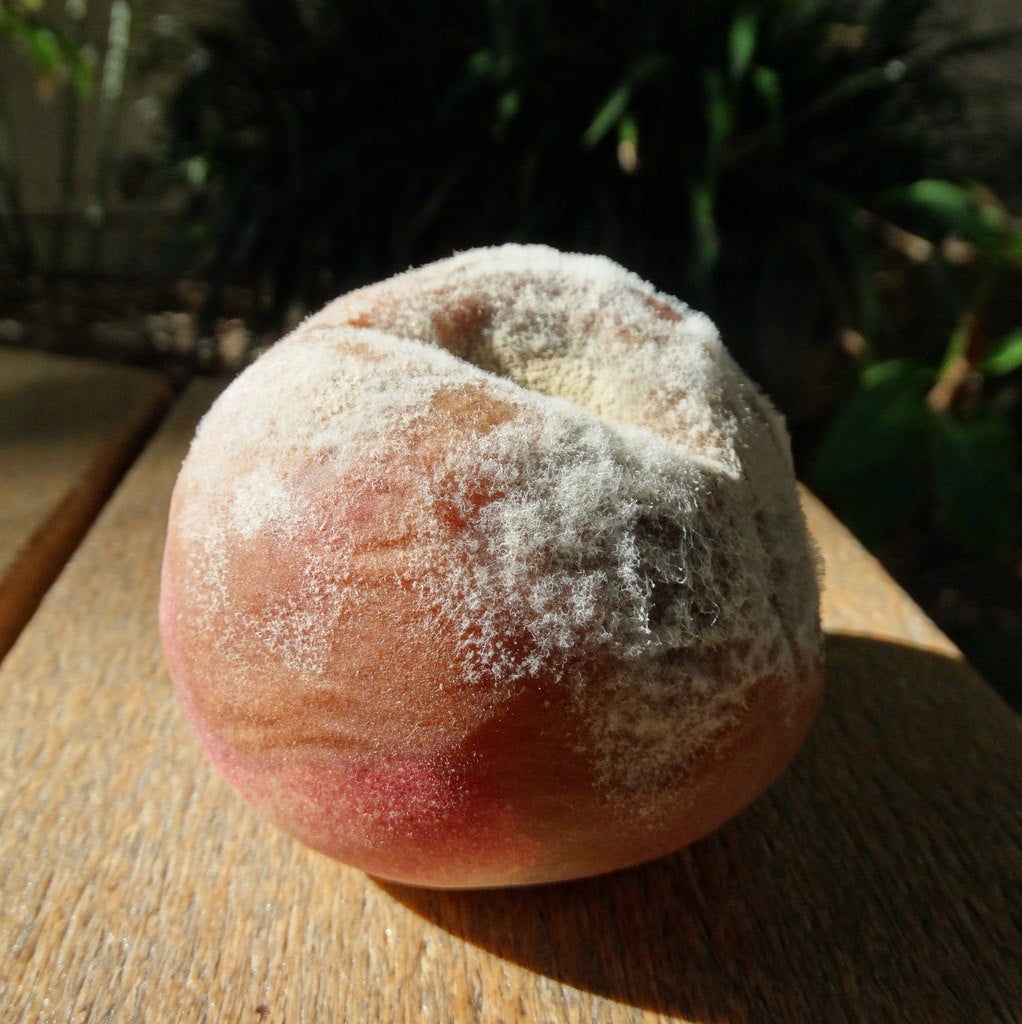Peach Brown Rot Control: Treating Brown Rot Of Peaches


Growing peaches in a home orchard can be a great reward come harvest time, unless your trees are hit by brown rot. Peaches with brown rot can be completely destroyed and become inedible. This fungal infection can be managed with prevention measures and fungicides.
What is Peach Brown Rot?
Brown rot is a fungal infection that can impact peaches and other stone fruits. Brown rot of peaches is caused by the fungus Monilinia fructicola. It infects trees in two stages. During blossoming, flowers will develop brown spots and quickly die. Look for dusty fungal growth on the dead blooms and cankers on the twigs.
The infection can also set in during peach ripening, triggered by the fungal growth on the flowers and twigs in the spring. Peaches with brown rot have brown spots that quickly spread. The infection moves fast, rotting entire fruits in just a couple days. Eventually, an affected peach will shrivel up and drop to the ground. This is an important source for ongoing infection.
Peach Brown Rot Control Methods
Brown rot on peach trees can be treated with fungicides, including myclobutanil or Captan, but there are also things you can do to prevent the infection or manage and control it without losing too much fruit.
The infection begins in temperatures as low as 41 degrees F. (5 C.), but 77 degrees F. (25 C.) is the ideal temperature. Water on petals and twigs is necessary for infections to begin in the spring. Avoiding overhead watering and keeping trees thinned adequately for good airflow and drying after rains is important.
Good sanitary practices in the orchard is among the best things you can do to control brown rot of peaches. Any fruit you thin from the tree should be removed and destroyed. Clean up under trees in fall, after harvesting peaches, and remove any rotted fruits especially. If you see signs of infection in the spring blossoms that spread to twigs, trim out those twigs showing cankers during the summer months.
Wild plum can be an important source of infection by brown rot, so if you have had issues with this disease, check areas around your orchard. If you have wild plums, removing them can help prevent the disease and reduce infection rates in your trees.
Gardening tips, videos, info and more delivered right to your inbox!
Sign up for the Gardening Know How newsletter today and receive a free copy of our e-book "How to Grow Delicious Tomatoes".
When you harvest peaches from a tree that was impacted by brown rot, it may help to give each fruit a quick dip in a water bath. Studies have found that immersion for 30 to 60 seconds in water at 140 degrees F. (60 C.) significantly reduces decay in the fruit. Then store the fruit in cold temperatures.

Mary Ellen Ellis has been gardening for over 20 years. With degrees in Chemistry and Biology, Mary Ellen's specialties are flowers, native plants, and herbs.
-
 Terrifically Tubular Flowers For Hummingbirds: 9 Tube-Flowered Plants To Attract Hummers
Terrifically Tubular Flowers For Hummingbirds: 9 Tube-Flowered Plants To Attract HummersGrowing tubular flowers for hummingbirds helps you create the optimum feeding conditions for your winged friends. Here are nine tubed delights for hummers
By Tonya Barnett
-
 How To Grow Hydroponic Tomatoes For Fresh Indoor Harvests – No Soil Required
How To Grow Hydroponic Tomatoes For Fresh Indoor Harvests – No Soil RequiredLearning how to grow tomatoes in water is easy and allows you to harvest fresh-home-grown produce in every season without any mess.
By Ellen Wells